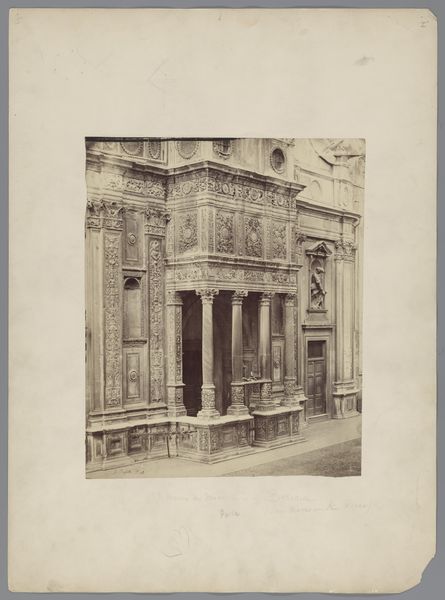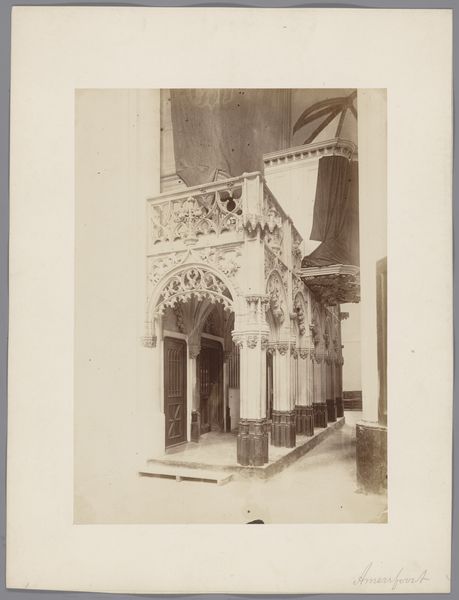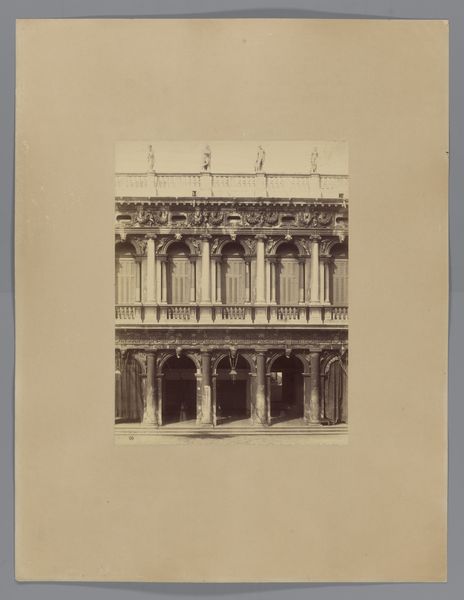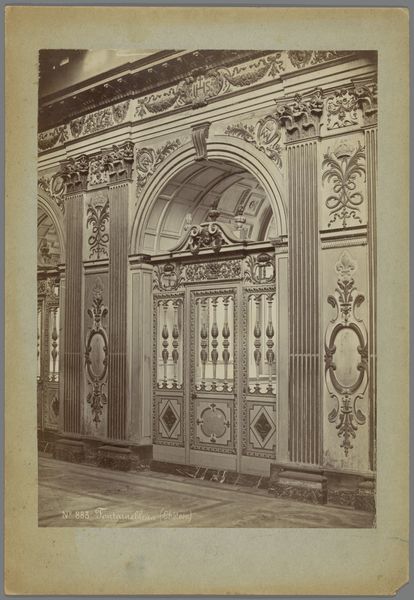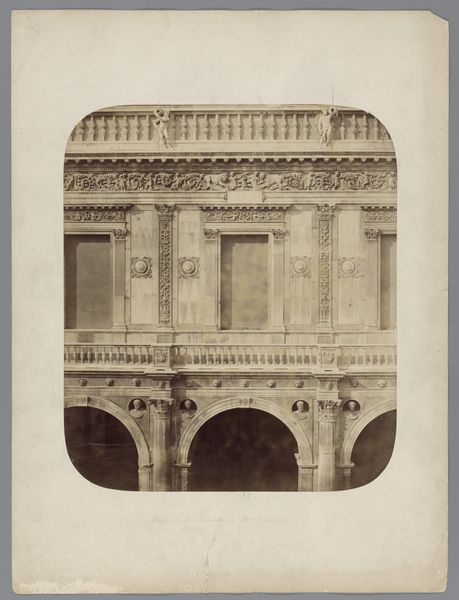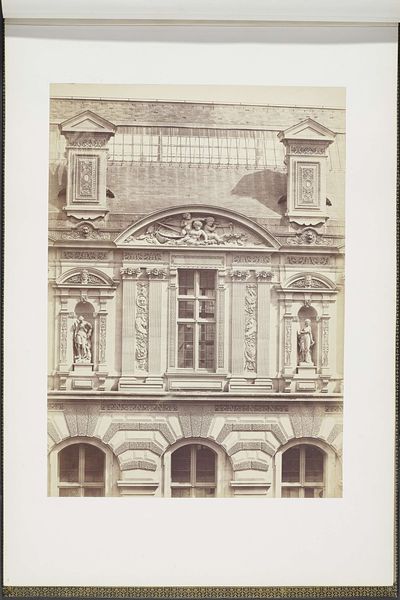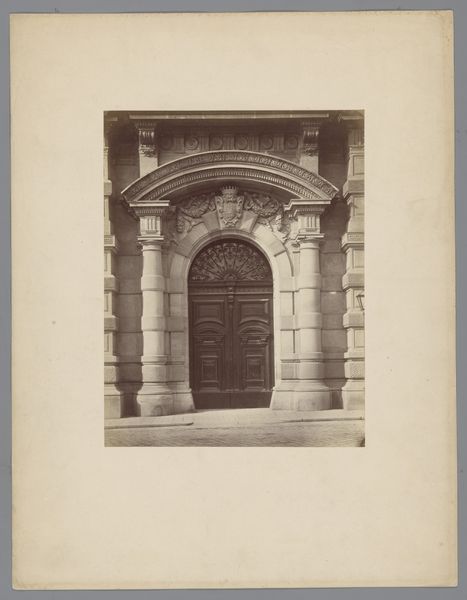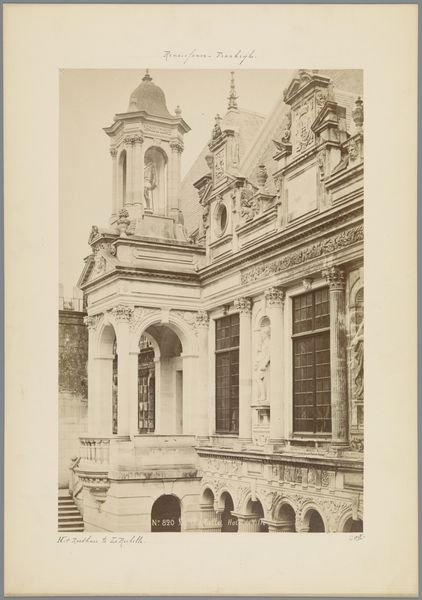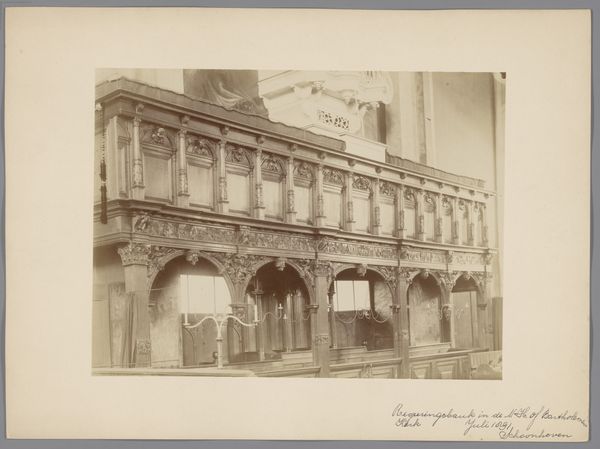
Dimensions: height 480 mm, width 321 mm
Copyright: Rijks Museum: Open Domain
Editor: Here we have Carlo Ponti's photograph, "Part of a Facade in Venice, Italy", taken sometime between 1852 and 1893. It looks like a print of a photograph showing ornate stonework on a building, very geometric. What catches your eye? Curator: Immediately, I think about the labor involved in both the architecture itself, the intricate carvings and structure, and the photographic process. What materials were readily available at this time in Venice? Who was responsible for obtaining them, and who benefitted? These are crucial considerations. Editor: I hadn't thought about the stone itself and where it came from. Is the photograph itself, as a reproducible image, somehow implicated in systems of labor and commodification? Curator: Exactly. The act of photographing architecture, transforming a building into a commodity, fits into an emerging tourist industry and image economy. This image wasn’t simply captured; it was produced. The darkroom work, the paper, the chemicals – consider the colonial extraction inherent in making even this one photograph. Editor: So, while seemingly a straightforward image of a building, it's deeply embedded in the material realities of its time? Curator: Precisely. And consider the social context: who could afford such photographs, and what did their purchase signify about their own social standing and cultural capital? The facade isn't just stone; it's a marker of power. Editor: I'm beginning to see how examining the materials and the processes changes the whole meaning of the image. Curator: And challenging traditional art historical views. We are acknowledging what is consumed but we must also think about the processes of art-making itself.
Comments
No comments
Be the first to comment and join the conversation on the ultimate creative platform.
